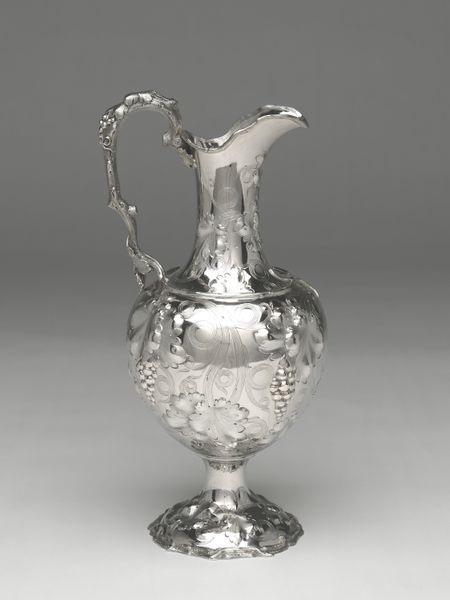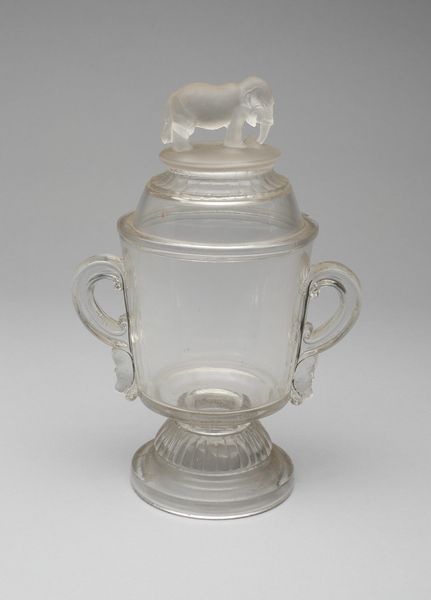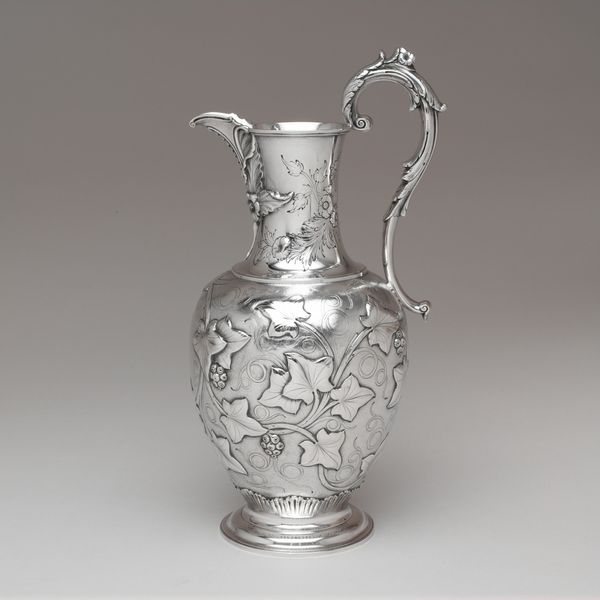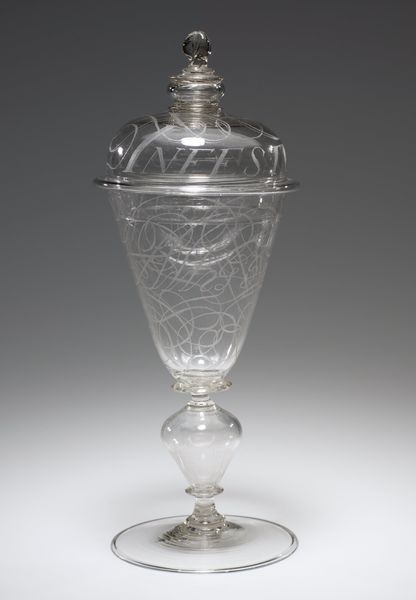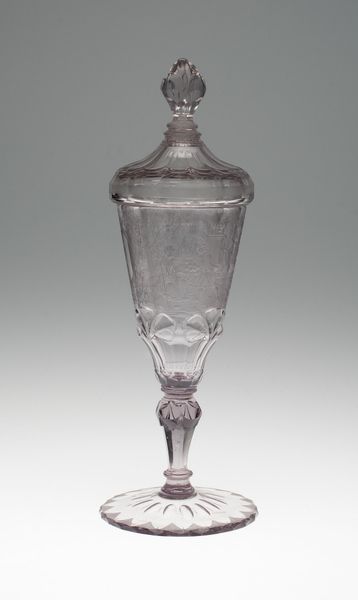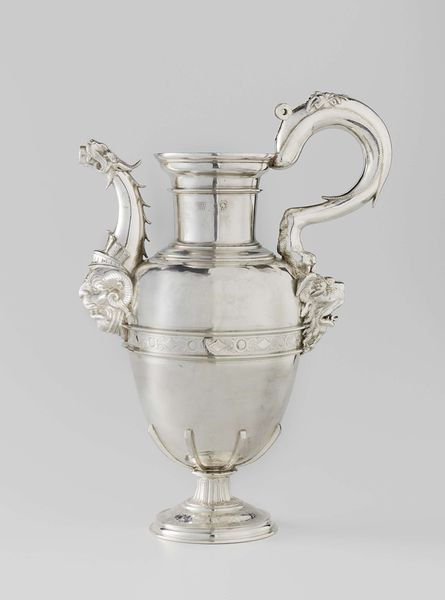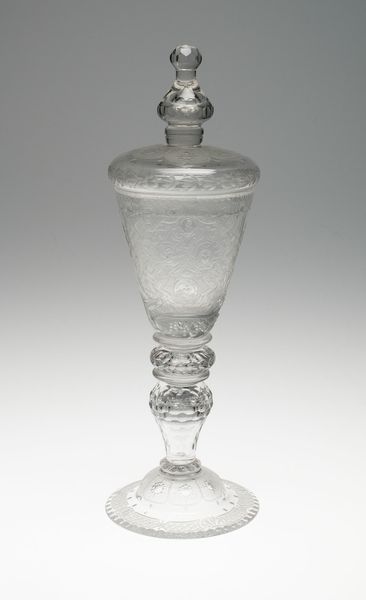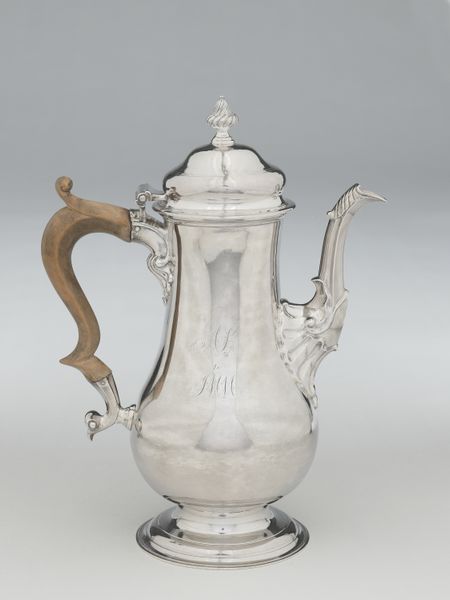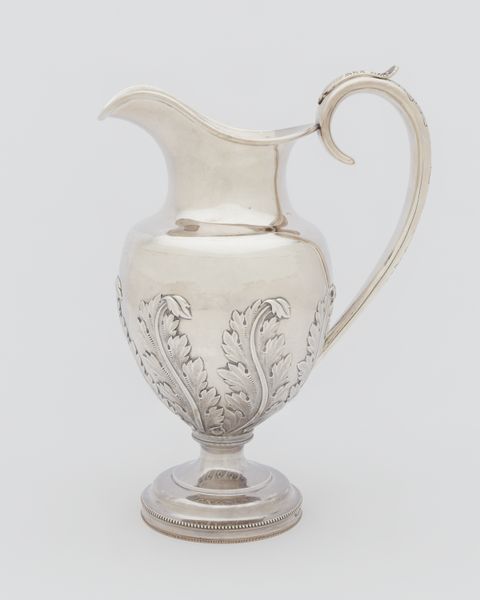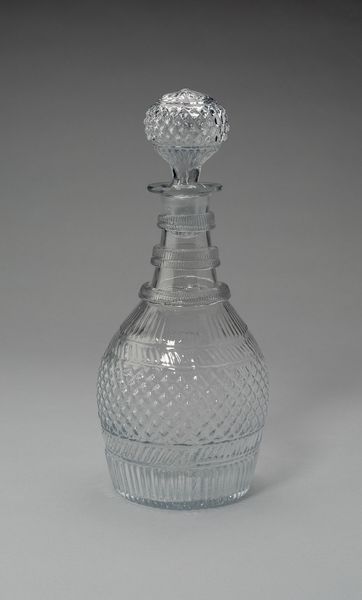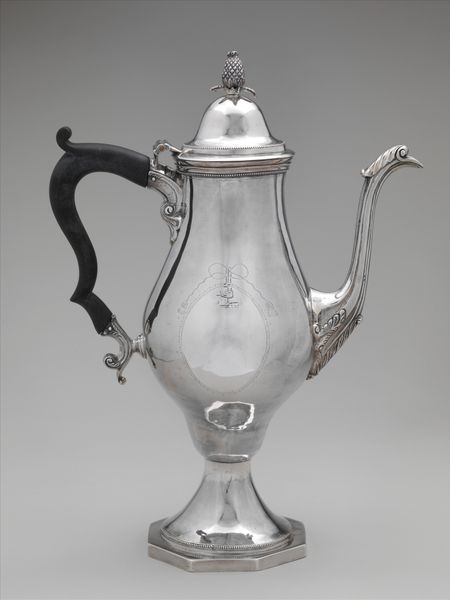
Dimensions: 11 1/16 in. (28.1 cm)
Copyright: Public Domain
Editor: Here we have a stunning glass object titled "Claret Jug," created between 1820 and 1830 by Apsley Pellatt. The intricate detail is really captivating; the way the light refracts through the glass. What is your reading of this object? Curator: Well, from a materialist perspective, let’s consider the process of its creation. Pellatt was renowned for his patent for "cristallo-ceramie," embedding cameos in glass. We must ask: What sort of labor went into making this jug? How does the mechanization of glass-cutting at the time influence its design? Is it mass-produced luxury, or something else? Editor: That's interesting. I was initially drawn to the Baroque elements, that ornate decoration. But thinking about production... were these jugs intended for everyday use, or were they primarily ornamental? Curator: Likely ornamental for the emerging middle classes eager to flaunt their disposable income, even though functional use cannot be discounted. This brings in an examination of class and consumption. How did owning an item like this signal status in early 19th century society? And how accessible *was* it, really, given the likely cost of materials and specialized labor involved? Think about the social function of such "decorative art". Editor: I see what you mean. It moves beyond just appreciating its aesthetic qualities and invites a deeper understanding of the societal structures at play. Curator: Precisely. Consider the raw materials, the mines from which they come, the fuel needed to fire the furnaces… Everything contributes to a narrative far grander than just a pretty object. We are talking exploitation. What goes into all this? Editor: Looking at the piece now, I notice not only the final form but the hidden elements, that complicated system of material extraction, refinement, production, and social impact. I would never had gone so deep, left to my own devices! Curator: Indeed. The Claret Jug becomes a window into the economic and social fabric of the time. We can learn from focusing on glassmaking and the context that surrounds this production.
Comments
No comments
Be the first to comment and join the conversation on the ultimate creative platform.
